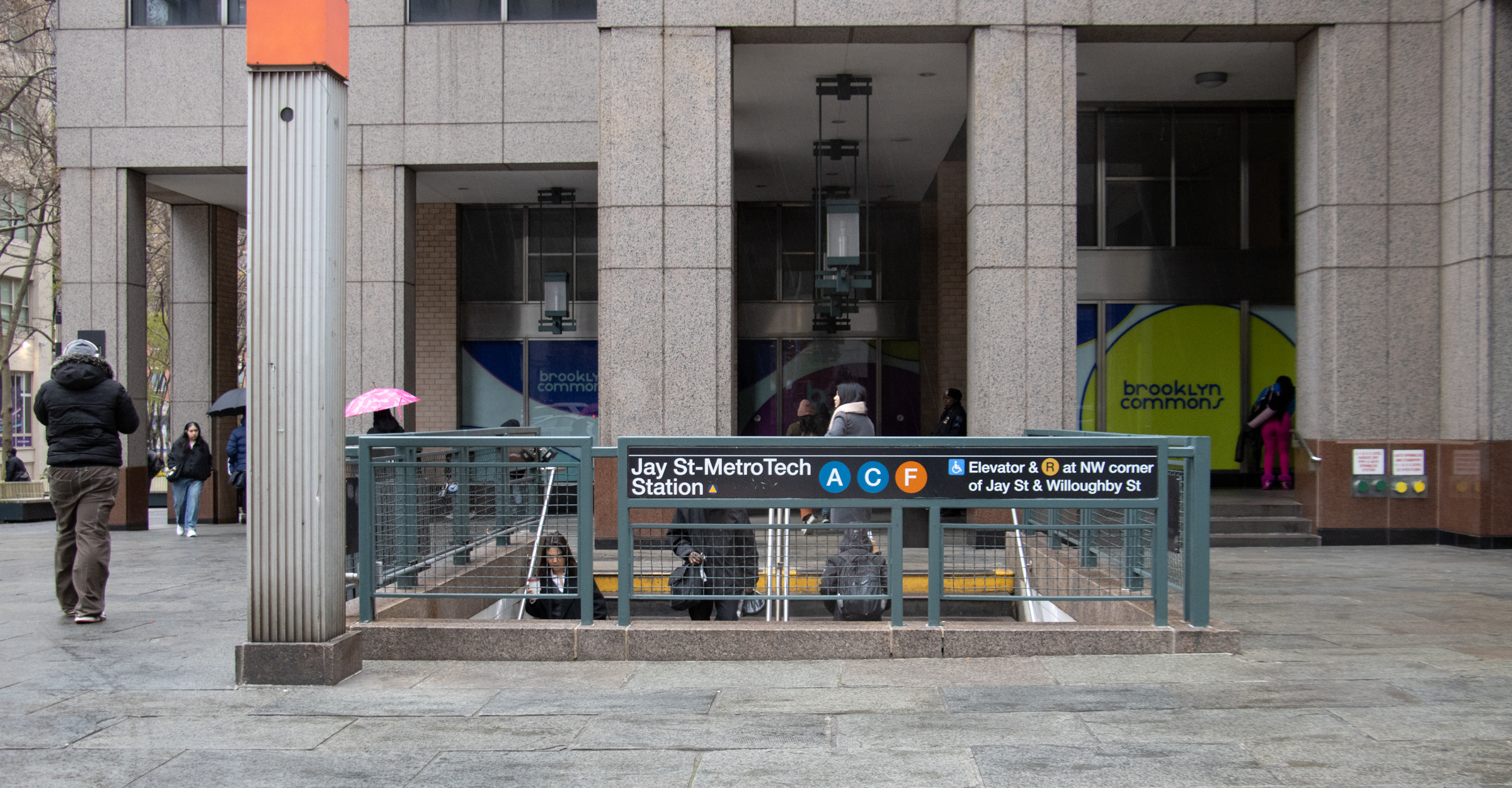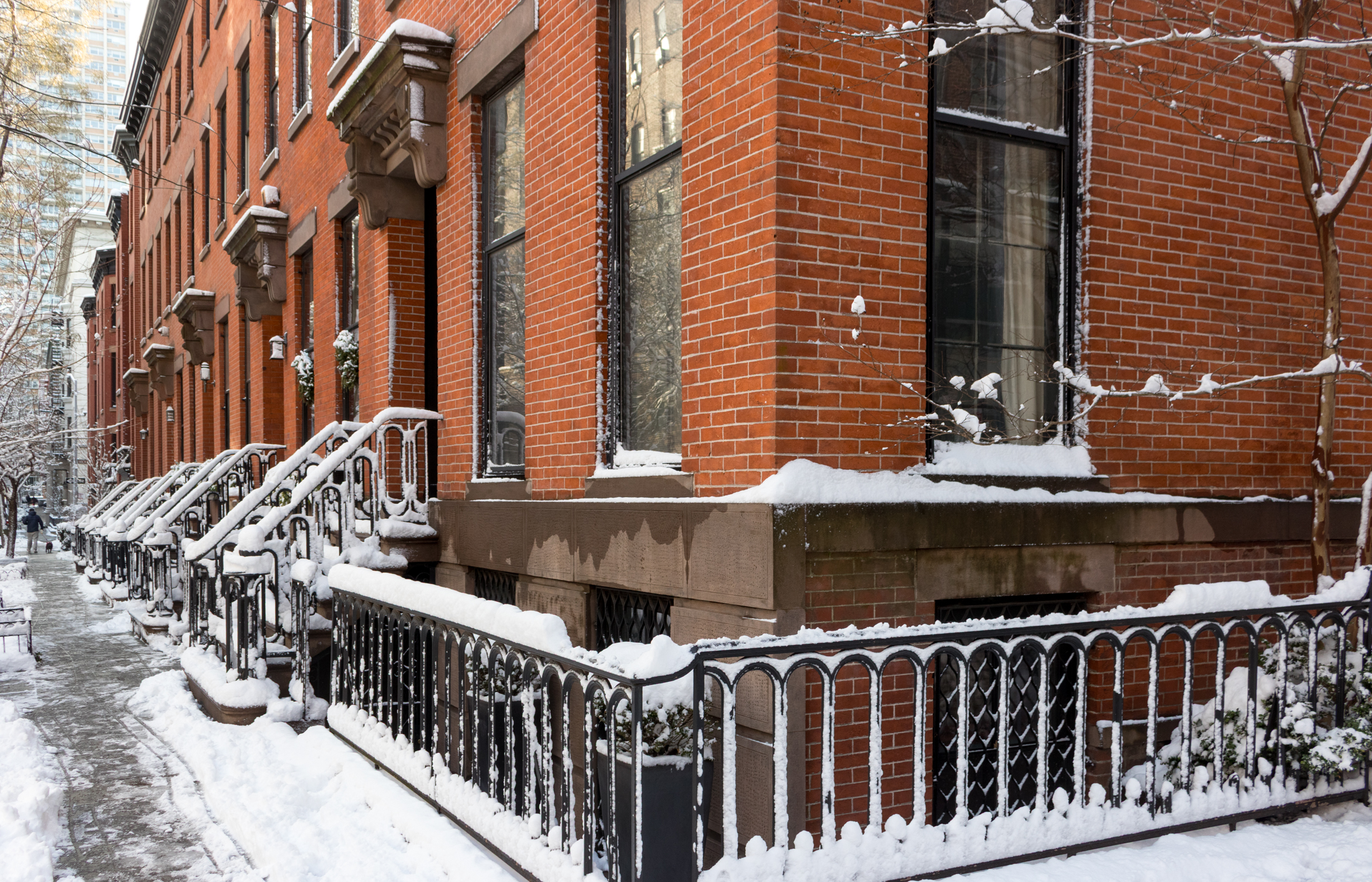Plenty of Discord Over John Jay Expansion Plan
Yesterday the Brooklyn Paper wrote about the proposed expansion of Park Slope’s John Jay High School to include Manhattan’s Millennium School. And last night John Jay students protested the expansion prior to a public hearing with the Department of Ed. The school, which the Brooklyn Paper notes is mainly comprised of minority students outside of…

 Yesterday the Brooklyn Paper wrote about the proposed expansion of Park Slope’s John Jay High School to include Manhattan’s Millennium School. And last night John Jay students protested the expansion prior to a public hearing with the Department of Ed. The school, which the Brooklyn Paper notes is mainly comprised of minority students outside of the neighborhood, asked for more resources and funding for the three schools already at John Jay, instead of supporting a new, fourth school (which is a largely white college prep school). Before the public hearing began students were chanting, “How do you spell racist? DOE” and “Integrate don’t segregate.” Parents, faculty, and Assemblyman Jim Brennan stressed the need for more resources, with the idea that improving the existing schools will increase enrollment from within the neighborhood. Student speakers were more blunt. One student called the school’s metal detectors, which John Jay has previously asked the DOE to remove, “a racist ritual” that discourages any Park Slope kid from attending John Jay. Another student thought the consistent lack of funding was a message that “Our school isn’t good enough for Park Slope residents,” while another said, “While Park Slope may enjoy the representation of a desirable place to live and work, that representation has never been expanded to our school.” The policy vote on whether Millennium Brooklyn will move in is scheduled for Wednesday, January 19th.
Yesterday the Brooklyn Paper wrote about the proposed expansion of Park Slope’s John Jay High School to include Manhattan’s Millennium School. And last night John Jay students protested the expansion prior to a public hearing with the Department of Ed. The school, which the Brooklyn Paper notes is mainly comprised of minority students outside of the neighborhood, asked for more resources and funding for the three schools already at John Jay, instead of supporting a new, fourth school (which is a largely white college prep school). Before the public hearing began students were chanting, “How do you spell racist? DOE” and “Integrate don’t segregate.” Parents, faculty, and Assemblyman Jim Brennan stressed the need for more resources, with the idea that improving the existing schools will increase enrollment from within the neighborhood. Student speakers were more blunt. One student called the school’s metal detectors, which John Jay has previously asked the DOE to remove, “a racist ritual” that discourages any Park Slope kid from attending John Jay. Another student thought the consistent lack of funding was a message that “Our school isn’t good enough for Park Slope residents,” while another said, “While Park Slope may enjoy the representation of a desirable place to live and work, that representation has never been expanded to our school.” The policy vote on whether Millennium Brooklyn will move in is scheduled for Wednesday, January 19th.





Heather until you can show in ANYWAY that the schools housed at JJ HS are somehow less funded than other schools everything you say is worthless.
Your entire premise (and that of all these people protesting) is that the JJ H.S. schools arent being treated fairly on a funding basis – ok that is a legitimate criticism EXCEPT noone has ANY PROOF that this is so.
Further I havent “demonized” anyone all I have said is that if you dont have a HS diploma you are doomed. Which is statistically a fact from almost every measure (income, health, divorce rates, happiness, etc…). Its funny how my posts and the physical location of a specialty school gets you and so many others indignant, but the fact that millions of NYC school students are being sent out with virtually NO PROSPECT for LIFE doesnt seem to motivate much outrage.
Let say they dont put this school at JJ HS – is one more kid going to graduate, is one more kid going to have a shot at a productive interesting life? Is one more kid going to go to college?
Please explain to me why if JJ HS was being so cheated in terms of funding there hasnt been a single contentious protest, meeting, campaign or anything? Why does the proximity of a new selective school make a particle of difference. Would any of those parents have protested if they opened up the same H.S. in the PS 51 building? Woudl that have helped to integrate JJ HS (racially or socio-economically)
The idea that what makes a successful school is money (donated or budgeted) or voluteering is just plain silly.
What makes a good school is having students that are prepared and equipped to learn – and that has almost nothing to do with either (there is a difference between correlation and causation). No one is so naive to not recognize that those in poor or disadvantaged situations do not often have a tougher time than the wealthy dedicating the time and energy to making sure that their kids are prepared, equipped and expected to learn – but millions of children from very poor and disadvantaged backgrounds whose parent(s) did the prep necessary certainly demonstrate that it is possible. (70% of Stuyvesant is asian – something tells me many/most of those kids faced language issues, poverty and other severe disadvantages)
This is not to “blame the victims”, but to just point out how tired, silly naive and not factual the whole theory that poor academic performance is simply about funding . It is clearly way more complex than that and NO ONE has come up with an effective answer as of yet. So in the meantime parents are 100% legitimate (if not duty bound) to seek out the best educational opportunities for their children, and if that unfortunately ends up upsetting some – tough shit.
FRSQ, you have your facts and I have mine. Miraculously, they both seem to support our entirely different agendas. In my experience, this is how “facts” work. Especially on the internet.
I have read that poorly-performing schools get less money– at least as a rule. I read that in one of Kozol’s books. In fact, I believe it’s his main — or one of his main — points.
And it doesn’t take an accountant to realize that running three schools (especially when you’re also including start-up costs) costs more than running one.
It’s laudable, I guess in a way, that you’re comfortable with demonizing entire classes and sections of children on the internet posting under an anonymous login name… but I really hope that’s not what you’re imparting to your own kids, all under the name of “superior” education.
“How do you spell racist? DOE.” Distressing situation. I would think that students in a lower-performing, under-resourced facility would see the value in the DOE investing more resources/offering more options in that facility. Apparently not.
As a parent of a kindergarten student in an NYC public school, I’m just beginning to confront some of these issues. The racism charge is a tricky one. By and large, the parents I’ve met value diversity and aren’t put off by the idea of sending their children to a “minority-majority” institution–but the institution must be of high quality. The problem comes in the troublesome alignment of race/class with quality. Every liberal wants to break this alignment and live in a world of high-quality institutions (and I don’t just mean schools) that cater to a diverse crowd, all succeeding and all getting along. People want to raise their children in a color-blind society: nobody really wants to participate in sending the message that white/wealthy children are somehow “up here” and other kids are “down there” in terms of resources, access to services, etc. But troublesome race/education/income distributions mean that these problems can’t just be wished away.
So the question becomes, how to raise the quality of a school to the point that virtually every kid graduates and enrolls in college? Sadly, it takes money, and increased parental participation (volunteering, fund-raising, etc)and this is where the issue gets even trickier. Forget about race for a minute: if a school can attract wealthier students, and get parents to donate money and time, the tide can lift all boats: we’ve seen it in some local elementary schools. This is the opportunity John Jay has right now–offer a small high-quality program (and obviously the DOE should strive to make it racially diverse to circumvent these racism charges), attract a group of higher-income kids/families to the school, gradually expand the program, get a tipping point, and before you know it you have a wonderful, high-performing, racially and economically diverse high school–along the lines of the many successful public elementary schools in brownstone brooklyn. give it a chance, people!
I would ask those quoting statistics about these schools to read the response from The Secondary School for Research’s School Leadership Team, which they delivered at the meeting last night. It contains a lot of information that you are obviously unaware of.
http://ssfr.org/ssfr-responds
Well pHed: Living in PH, I’m a little bit familiar with the situation at PS9 and have heard good things about principal Sandra D’Avilar. They have also been great about making their auditorium available for community forums on local issues like Atlantic Yards and Landmarking. But I hadn’t heard about the charter school development. Frankly, charter schools make me nervous. Almost always when you scratch the surface, there are individuals with narrow agendas lobbying for their creation — and they do NOT have the interests of the whole community in mind.
actually, i think schools with lower socioeconomic populations get more per pupil in regular government funding. what they don’t get is the extra funding that generally comes from parent-led fundraising (and grant-receiving) efforts. i don’t know enough about the nyc school budgeting process, but as far as i know, money that comes as a result of parental efforts is responsible for a lot of what makes popular, well-performing public schools substantively different from the less-popular ones.
Heather – fact: there is virtually no correlation between per-pupil expenditures and overall performance.
Another fact – if you are a H.S. dropout you are almost assuredly doomed in our modern society – I didnt make this reality, I dont control this reality – but damn if I am going to let my Kids end up in this pile of failure.(and almost every parent that gives a shit about their kids feels and acts the same)
Last fact – you have NO idea how much funding students at Millennium (I or eventually II) get compared to JJ H.S. or any other H.S. – you just presume (with absolutely no facts to substantiate it) that these more successful schools get more funding, which is responsible for their success.
grand army: interesting idea, but i think union rules prevent the DOE from doing what you’re talking about.
also, although i wouldn’t term it “sacrifice,” an interesting example is what is happening at PS 9 in PH. over the last few years, the PTA has increased fundraising and community outreach efforts really remarkably. they, along with MS571 parents, managed to fully redesign a sad, disused library into a wonderful, bright space for the children. now the DOE wants to move a new charter school into PS9’s building, and limit PS9’s use of the library to 4 hours PER WEEK. it is easy to say that local parents have the power to change things quickly. but the reality, and the real problem, is that change from the ground-up takes time whereas change from the top-down seems to happen very quickly and without sympathy for what it might do to ongoing efforts in the other direction.